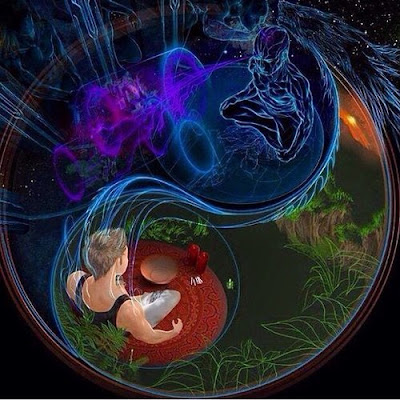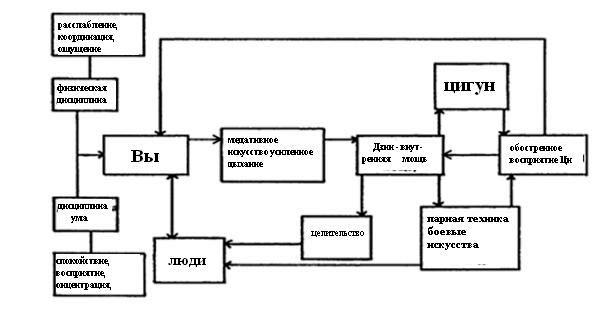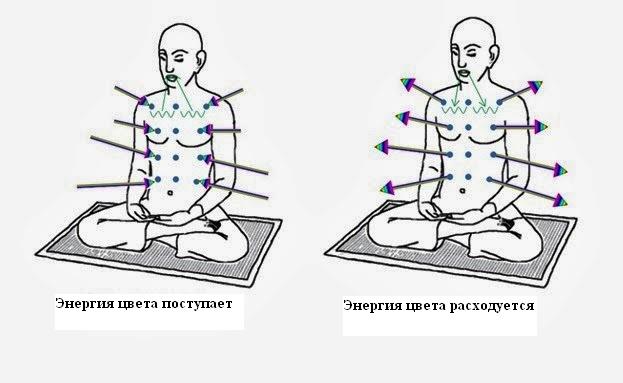https://vk.com/tianmu
Transparent Zen Meditation – Tong Ming Guan Chan
(通明觀禪)
Tong Ming Guan Chan (通明觀禪) in Chinese , it means a form of Chan meditation which is bright and transparent. It is introduced by Zhiyi (智顗), the fourth patriarch of the Tian Tai(天臺) tradition of Buddhism in China around the mid-sixth century.
The method of this meditation is briefly mentioned in the 《Mahavaipulya Mahasamghata Sutra》, but without a name. It is Zhiyi who gives the name 【Tong Ming guan Chan】(transparent Zen Meditation). He expands it and incorporates Chinese traditional medicine theory and practice into it.
Transparent Zen Meditation (TZM) bases on Pranayama(息), color perception (色) and mind(心). Mind here emphasizes on object recognition and inwardvision or endoscopic vision(內視). The advantage of TZM is that if one achieve the Pranayama practice, the other two will follow or vice versa. The practice of TZM is quick and direct. It is quick and fast to achieve Dhyana. It is direct and quick to accomplish the sixfold supernormal knowledge or power. TZM is not only fast to achieve four Dhyanas and eight Samadhis. It comprises all the virtues of the Hanayama and also those of Mahayama – universal Salvation.
It is Zhiyi’s opinion that the traditional Buddhist path (Zen meditation) does not have a clear practice method. It relies on practicing in the dark and tries to get a visible result(暗証取著) – that is four Dhyanas and eight Samadhis.
The method to practice TZM is simple. It is not for the novice, but for adept who is proficient in Pranayama.
In the book 《Tibetan Yoga and Secret Doctrines》, by W.Y. Evans-Wentz, has the following statement:
「(6) These teachings are in two parts: those which are preparatory, and those which constitute this treatise.
(7)The first, the preparatory, are to be found elsewhere.
(8) The second, those which constitute this treatise, consist of the Psychic-
heat」
So it is clear that normal “preparatory” methods are not presented in ancient Buddhist scripts or sutras.
1. TZM Meditation
Here, the three practices in TZM are presented separately:
a. Pranayama(息)
First manifestation, in the first Samadhi, one able to visualize the physical body (inside and outside). 99,000 hair pores become more porous. The Prana can enter and leave the pores freely. Though the eyes can perceive the Prana in and out movement in the entire body, however, the Prana move in without concentration and move out without dispersement. Further, there is no designated pathways.
b. Color Perception (色)
If the adept progresses with the Dhyana practice, the state of Samadhi will also improve. The sensation of the internal organ visualization also changes. Their organs’ property change and differ. Blue, yellow, red, white and black color etc. will appear. The color varies with different organ. If the five indriya enter the body, the colors are also different.
In the meditation, the adept realizes that the internal and external are not real, such as that of a musa basjoo plant.
c. Mind (心) - Endoscopic Vision
If a bodhisattva achieves Liu-Li(琉璃)Samadhi, the Bodhisattva will see Buddha at the hair pores, and enter into the seats of the Bodhisattva, and enjoys the three vehicles of Buddhism.
In summary, the three steps of TMZ are:
I. Pranayama: opening of hair pores – in and out Prana movement. (Figure 1A, 1B)
II. Color: color (Prana) phenomena through pores – endoscopic visualization. (Figure 2A, 2B)
III. Mind: perception of deities. (Figure 3A, 3B)
Pranayama
Figure 1
TMZ - 1st Level
Color
Figure 2
TMZ - 2nd Level
Mind-Image
Figure 3
TZM - 3rd Level
In an earlier medicine Buddha text “Sutra spoken by the Buddha on the
contemplation of the two Bodhisattvas, king of healing and supreme healer"has the following paragraphs:
「Then, the Buddha told the great assembly: 『After my parinirvana, if there are any beings who (whish to ) fix their thoughts on the sole contemplation of the Bodhisattva King of Healing, they should practice the following five meditations:
1. The meditation of stabilizing though by counting breaths.
2. The meditation of pacifying and settling the mind.
3. The meditation of the non-exhalation of breath.
4. The meditation of reflection on Absolute Form.
5. The meditation of serene abode in Samadhi.』
The Buddha told Maitreya:“If any good son or daughter cultivates these five
meditations, that person will, in an instant, have a vision of the Bodhisattva King of Healing. This Bodhisattva is twelve yojanas tall, though in response to ﹝the limited perception of﹞sentient beings he may appear to be either a hundred eighty or eight feet in height. His body is purplish gold in hue, and the thirty-two primary marks and eighty secondary marks are marks are excellent in every detail, exactly like those of the Buddha. There are fourteen mani gems within the tuft of hair on his forehead ﹝the ūrṇȧ﹞, each gem having fourteen facets. Within each of these facets, there are fourteen flowers which adorn his heavenly crown. The Buddhas of the Ten Directions and the various Bodhisattvas are within this heavenly crown, all reflected manifestations, like inlaid jewels. From the mark of the tuft of hair between his eyebrows, thre streams out a ray of light the color of white glass, enwrapping his body seven times like a scarf of white jewels.
“A radiant light flows out from the pores of his body. ﹝These beams of light﹞, like fully 84,000 maṇi gems, each one turning to the right like a wheel, appear like a wall made of the seven gems or an abundant mass of pȧla flowers. Upon each flower there is a manifestation Buddha, each having the correct (standard) body sixteen feet tall, just like Śȧkyamuni. Each Tathȧgata has five hundred Bodhisattvas as attendants. 」
The last paragraph clearly describes that
i. Light flows through the pores of the body.
ii. Seven gems or pala flowers signify color.
iii. Each flower (pore) has a deity.
These three are consistant with the steps in TZM.
In Evans-Wentz’s book 《Tibetan Yoga and Secret Doctrines》, the discussion
in following paragraphs, in certain sense, are similar to TZM.
I. Pranayama:
【Preliminary Exercise I: Visualizing the physical body as being vacuous.】(前行修習)
(11) In the first of the preliminary exercises, Visualizing the Physical Body as being Vacuous.
(14) Visualize her as being thyself, externally in the shape of a
deity, and internally altogether vacuous like the inside of an empty sheath,
transparent and uncloudedly radiant; vacuous even to the finger-tips, like an
empty tent of red silk, or like a filmy tube distended with breath.
(15) At the outset, let the visualization be about the size of thine own body; then,
as big as a house; then, as big as a hill; and, finally, vast enough to contain the
Universe. Then concentrate thy mind upon it.
(16) Next, gradually reduce it, little by little, to the size of a sesamum seed, and
then to the size of a very greatly reduced sesamum seed, still having all the limbs
and parts sharply defined. Upon this, too, concentrate thy mind.
In (16) the sesamum seed signifies smallest object which should be able to pass through pores in the body (?).
II. Color
【Preliminary Exercise 3: Visualizing the Protective Circle】
(26) In the Art of Directing Thought (or Mental Imagery), one is to imagine, when the expiration is going out, that innumerable five-coloured rays are issuing from each of the hair-pores of the body and radiating over the while world and filling it with their five-coloured radiances, and that when the inspiration is coming in they are re-entering the body through the hair-pores and filling the body.
(27) Each of these (two complementary exercises) is to be performed seven times.
(28) Then imagine that each of the rays is changed into the syllable HŪṂ, vari-coloured; and that while the expiration is going out the world is being filled with these HŪṂS, and that when the inspiration is coming in, that one’s body is being filled with them. Do this seven times.
III. Mind
【Preliminary Exercise 3: Visualizing the Protective Circle】
(29) Next imagine that the HŪṂS are changed into Wrathful Deities, each having one face and two hands; the right hand held aloft, flourishing overhead a dorje; the left hand held in a menacing posture against the heart; the right leg bent and the left leg held tense; of very angry and fierce mien and of five colours, none of them larger than a sesamum seed.
(30) As the expiration is going out, think of them as going out with it and filling the world.
(31) As the inspiration is being drawn in, and held, imagine them as coming in with it and filling the body.
(32) Perform these two complementary exercises seven times each, making, in all (with the above), twenty-one exercises.
(33) Then think that each of the hair-pores of thy body in filled with one of these Wrathful Deities, with his face turned outwards, and that all of them taken together constitute a coat of mail which thou art wearing.
【Conclusion】
The medicine book above substantiate Zhiyi’s book on TZM. Evan-Wentz’s book supplements the imperfection of Zhiyi’s practice procedures or techniques. However, one has to practice Prana or Qi, then, one has to accomplish the open of micro-cosmic circulation. Finally, one has to practice Yoga to develop the Sushumna and the two Nadis. Until one becomes an adept with proficiency in Pranayama, one should not start TZM or the result is fruitless.
Приглашаем на нашу страничку в ВКонтакте https://vk.com/tianmu
подписывайтесь,
цигун и мистический будизм, практика и теория


















